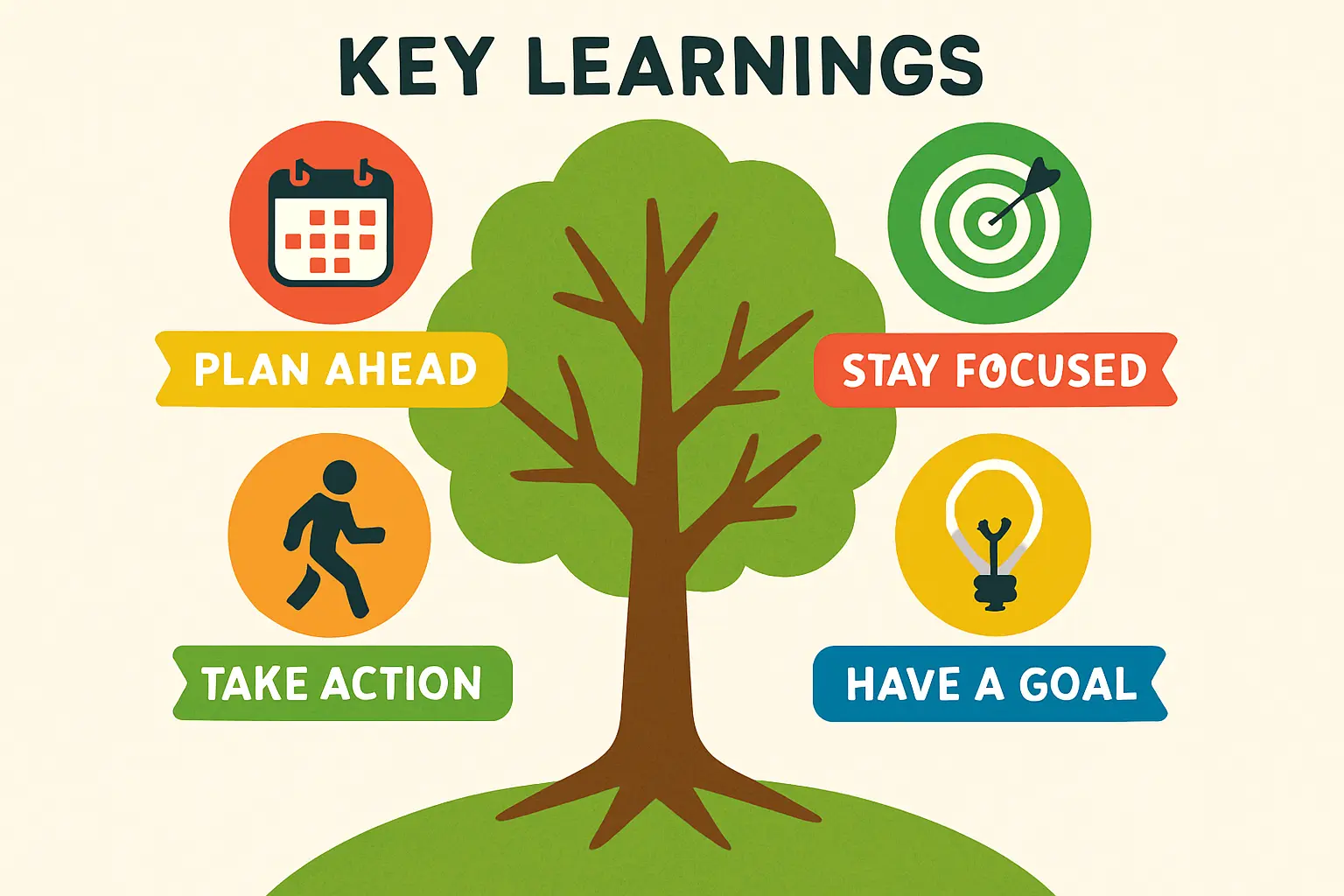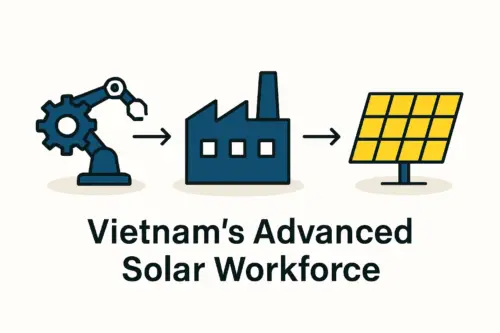Environmental Impact Assessment (EIA) for Solar Factories in Vietnam: An Investor’s Guide
An investor has a comprehensive business plan, secured funding, and identified a promising location for a new solar module factory in Vietnam. The technical and financial hurdles appear manageable. Yet one critical regulatory milestone, often underestimated by those new to the market, can define the project’s entire timeline: the Environmental Impact Assessment (EIA).
This process is no mere formality. It is a mandatory, in-depth evaluation that serves as a prerequisite for obtaining an investment license and construction permits. This article offers a clear overview of Vietnam’s EIA process for industrial projects like solar manufacturing, outlining the necessary steps, typical timelines, and key considerations for foreign investors.
Understanding Vietnam’s Environmental Regulatory Framework
Vietnam’s approach to industrial development is governed by a strong commitment to environmental protection, laid out in the Law on Environmental Protection (LEP) 2020 and its guiding decrees, notably Decree No. 08/2022/ND-CP. This framework is designed to ensure foreign investment projects operate sustainably and responsibly.
The Ministry of Natural Resources and Environment (MONRE) and its provincial-level departments (DONREs) are the primary authorities overseeing environmental compliance. Under the LEP, all investment projects are classified into one of four groups based on their potential environmental impact:
- Group I: Projects with a high risk of adverse environmental impact.
- Group II: Projects with a risk of adverse environmental impact.
- Group III: Projects with a low risk of adverse environmental impact.
- Group IV: Projects with no risk of adverse environmental impact.
A solar module manufacturing facility, given its scale, use of chemicals, and generation of industrial wastewater and emissions, will almost certainly be classified as a Group I or Group II project. This classification mandates a full, formal Environmental Impact Assessment before any construction can commence.
The Core Components of an Environmental Impact Assessment in Vietnam
The EIA report is a comprehensive technical document that acts as a blueprint for the project’s interaction with the surrounding environment. Prepared by a licensed Vietnamese consulting entity, it must provide a detailed analysis of the project’s potential effects.
Key sections of the EIA report include:
- Project Details: The origin, scale, capacity, technology, and operational plan of the facility.
- Environmental Impact Analysis: A thorough assessment of potential impacts on air quality, water sources, soil, and local ecosystems, as well as noise and vibration levels.
- Waste Management: Detailed plans for the collection, treatment, and disposal of solid waste, hazardous materials, and industrial wastewater, aligned with national technical standards.
- Mitigation Measures: A description of the specific technologies and processes that will be implemented to minimize negative environmental effects.
- Environmental Management Program: An outline of the monitoring and reporting procedures to be followed throughout the factory’s operational life.
- Community Consultation: Verifiable results of consultations held with local authorities and affected communities.
The Step-by-Step EIA Approval Process
Navigating the EIA process requires a systematic approach and a clear understanding of each official stage. Based on experience from numerous turnkey projects, the timeline from engaging a consultant to receiving final approval can range from 6 to 12 months, depending on project complexity and the thoroughness of the initial submission.
Step 1: Project Classification and Screening
The first step is the formal classification of the project into Group I, II, III, or IV. This is based on criteria in Decree 08/2022/ND-CP, which considers the project’s industry, scale, and the sensitivity of its location. For a solar factory, this classification determines the required scope of the full EIA report.
Step 2: Preparing the EIA Report
The investor must engage a qualified and licensed local environmental consulting firm. This is a non-negotiable requirement, as Vietnamese law mandates that the report be prepared by a certified domestic entity. This firm will conduct baseline environmental surveys at the proposed site and work with the investor’s technical team to gather detailed data on the solar manufacturing machines and planned operational procedures.
Ready to make big Profits?
The solar Industry is Booming
WE HELP NEWCOMERS to the solar industry start their own solar module production line. Customers can make BIG PROFITS by selling modules and finding investors, without wasting money and time on things they don't need!
Step 3: Consultation and Public Opinion
The draft EIA report must be presented to local stakeholders for consultation. This typically involves formal meetings with the People’s Committee of the commune where the project is located and soliciting feedback from nearby residential communities. All feedback must be documented and addressed in the final report. This step is crucial for building local support and can cause significant delays if not managed well.
Step 4: Submission and Appraisal
The completed EIA report is submitted to the competent state authority, either MONRE for larger, more sensitive (Group I) projects or the provincial People’s Committee (delegated to DONRE) for Group II projects. The authority then establishes an Appraisal Council, made up of government officials, environmental experts, and scientists, to review the report.
Step 5: Revision and Final Approval
The Appraisal Council holds a formal meeting where the investor and their consultant present and defend the report. The council will provide comments, critiques, and requests for additional information or revisions. The report must then be amended to satisfy these requirements. Once the revised report is accepted, the authority issues a formal Decision on EIA Report Approval (DEIAR).
Step 6: The Environmental License
The DEIAR is the green light for construction, but it is not the final step. Before the factory can begin commercial operation, the investor must construct and test-run all environmental protection works outlined in the approved EIA, such as wastewater treatment systems. Following a successful inspection of these systems, the authority grants the final Environmental License, permitting the factory to operate.

Common Challenges and Timelines for Investors
While the process is well-defined, foreign investors often face several predictable challenges:
- Timeline Underestimation: The official appraisal period is approximately 45 working days for MONRE and 30 for provincial authorities. However, this excludes the time needed for data collection, report preparation, revisions, and consultations. A realistic project plan should budget 6 to 12 months for the entire EIA and licensing process.
- Data Specificity: The Appraisal Council requires precise technical data. Vague descriptions of the solar production line or generic waste treatment plans will be rejected. Detailed specifications from equipment suppliers are needed early in the process.
- Local Partner Competency: The quality of the local environmental consultant is paramount. An experienced firm not only prepares a technically sound report but also effectively manages relationships and communication with the relevant government authorities.
- Post-Approval Obligations: The EIA is not a one-time task. The final Environmental License comes with ongoing obligations for monitoring, record-keeping, and periodic reporting to environmental authorities.
Frequently Asked Questions (FAQ) for Solar Investors
What is the primary law governing EIAs in Vietnam?
The process is primarily governed by the Law on Environmental Protection (2020) and its implementing text, Decree No. 08/2022/ND-CP.
Can our international engineering team prepare the EIA report?
No. While your team must provide all the technical project data, the EIA report itself must be compiled and submitted by a Vietnamese entity holding the necessary government-issued license for environmental consulting services.
How does the EIA relate to the factory’s location?
The EIA is entirely site-specific. A fundamental component of the report is the assessment of the proposed location and its existing environmental conditions, such as proximity to rivers, residential areas, or nature reserves. A project that is acceptable in one industrial zone may be rejected in a more environmentally sensitive area.
What happens if our project plans change after the EIA is approved?
If there are significant changes to the project’s scale, capacity, or production technology that could increase adverse environmental impacts, the investor may be required to conduct a new EIA. It is therefore critical to have a well-defined project scope before starting the process.
Is the process different for a smaller 50 MW factory versus a larger 500 MW facility?
Yes. The project’s scale directly impacts its classification. A larger facility is more likely to be classified as a Group I project, falling under the jurisdiction of the national-level MONRE and facing a higher level of scrutiny during the appraisal process.

Navigating the Process with Confidence
The Environmental Impact Assessment in Vietnam is a rigorous and non-negotiable step in establishing a solar manufacturing facility. Rather than viewing it as a bureaucratic obstacle, successful investors treat it as an essential part of project planning and risk management.
A thoroughly prepared EIA not only ensures legal compliance but also demonstrates a commitment to responsible and sustainable operation, which can foster positive relationships with local authorities and communities. For investors new to the sector, integrating these complex regulatory requirements into the overall project plan from the outset is a critical factor for success. Understanding these frameworks is central to the initial planning guidance provided in the structured e-courses at pvknowhow.com.







